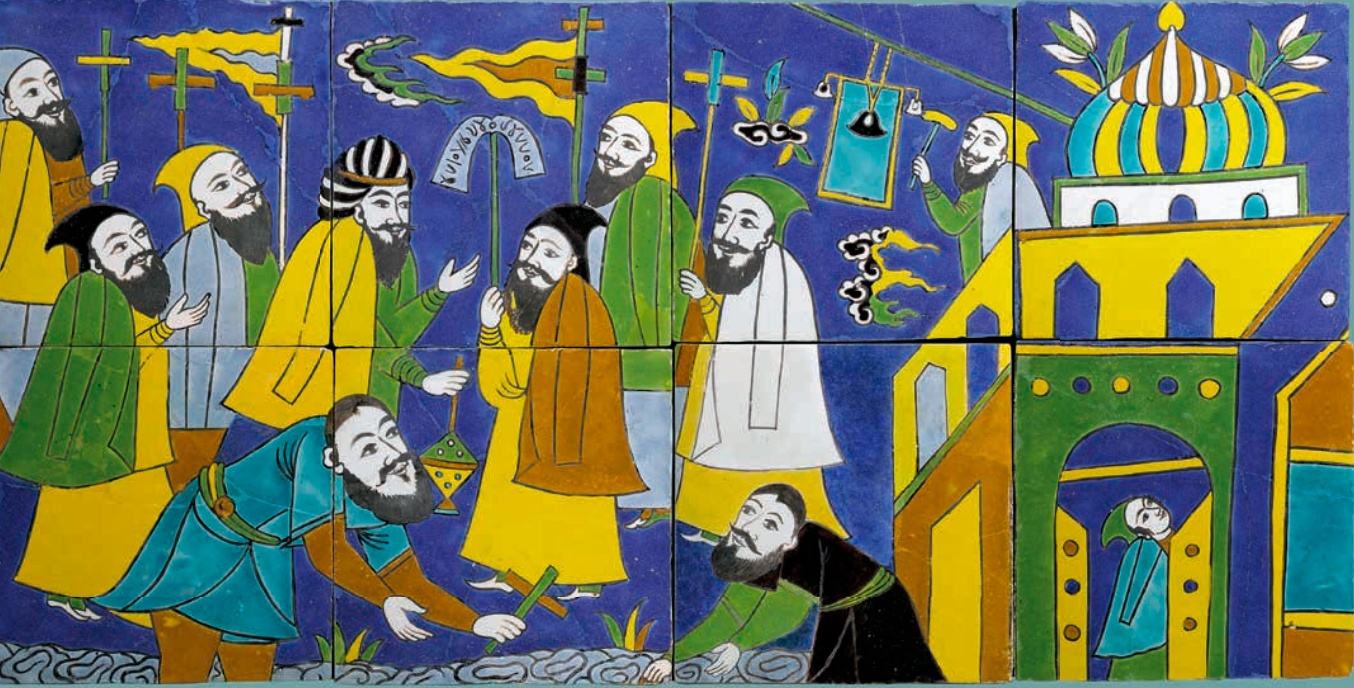
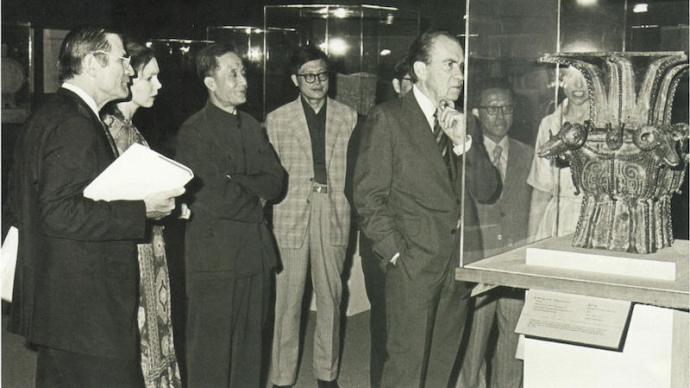
For the past 70 years, the international exchange of Shanghai Expo has been at the forefront of the country: from the beginning of the museum's establishment, it seemed to be a bit "passive", to the compilation of "International Cultural Relics Museum Work Dynamic Reference Materials" and "Relics Translation Collection" in the 1950s; from the 1970s. From the first time cultural relics went abroad to participate in overseas exhibitions, to the establishment of a cultural exchange office in the 1980s, and to the continuous international exchange of cultural relics in the past two decades... Shanghai Museum has become the most influential ancient Chinese art museum overseas and participates in international exchanges. One of the largest domestic museums.
In July, Yang Zhigang, the then director of the Shanghai Museum, accepted an exclusive interview with The Paper, Ancient Art. He believes that the importance of museums to cultural exchanges, and that museums are also an important platform for cultural and diplomatic relations, plays a role in cohesiveness in special times.
In mid-June, in the turnover warehouse of the Shanghai Museum, a special checkpoint handover of cultural relics re-entry was going on. The cultural relics handed over at the entry point this time are a batch of Chinese bamboo carvings exhibited by Shanghai Bo in the National Museum of Liechtenstein in early February this year. On May 8, after the closing of the exhibition, as Shanghai was in the period of epidemic control, the batch of bamboo-carved cultural relics were deposited in the warehouse of the National Museum of Liechtenstein via online and point-to-point storage for more than a month, and finally returned to Shanghai in mid-June.
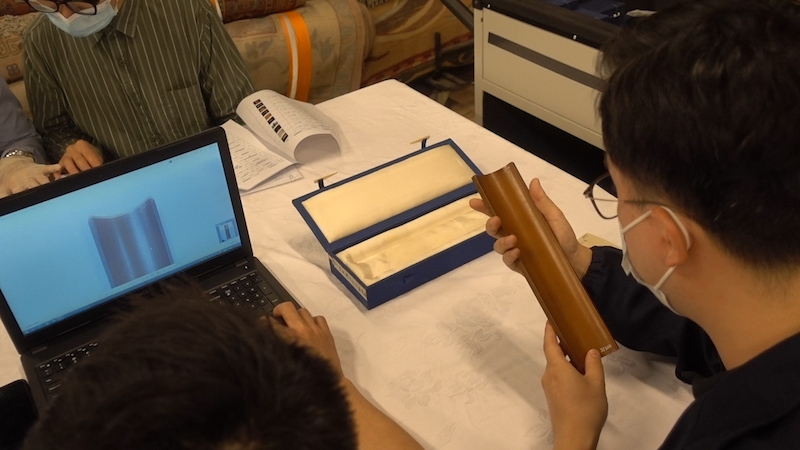
Re-entry checkpoint for cultural relics
"Unpacking, checking, keeping files, signing for receipt..." With the participation and supervision of the experts from the Technology Department and the Storage Department of Shanghai Bo, and the staff of the Shanghai Administration for the Entry and Exit Review of National Cultural Relics, the check-in work was carried out in an orderly manner. "We rarely show this behind-the-scenes work in front of the stage, and the general audience can't imagine how detailed and cumbersome it is," said Yang Zhigang, then director of the Shanghai Museum.
Open the cultural relics packaging box, take out the cultural relics from the box layer by layer, hand over the cultural relics to the experts of the crafts department to confirm the current situation of the cultural relics, compare with historical data, and hand over to the experts of the storage department to register the collection card information and keep the files... Regardless of the amount of cultural relics Regardless of size, this entire process must be repeated for each cultural relic being put into storage.

In April of this year, Shangbo just completed the handover of a batch of lacquerware collections that had ended overseas exhibitions and returned to Shanghai from Seoul, South Korea through online + offline methods. Similar online payment methods have gradually become the new normal of Shanghai Bo, which can be seen as a microcosm of the difficulty of holding exhibitions in Shanghai Bo under the epidemic.
Since the beginning of 2020, due to the impact of the epidemic, when international exchanges in various fields have come to a standstill, the Shanghai Museum's international cooperation exhibitions have never been interrupted. Compared with the past, both quantity and quality have basically maintained a consistent level. According to statistics, in 2021, the Shanghai Museum will send 4 outbound exhibitions, accounting for one-third of the total number of outbound exhibitions by cultural and museum institutions in the country; Tibetan Bamboo Carving Art Exhibition"; went to the National Museum of Korea to participate in the special exhibition "lacquer, paint Asia", etc.

A batch of Chinese bamboo carvings exhibited by Shanghai Bo in the National Museum of Liechtenstein
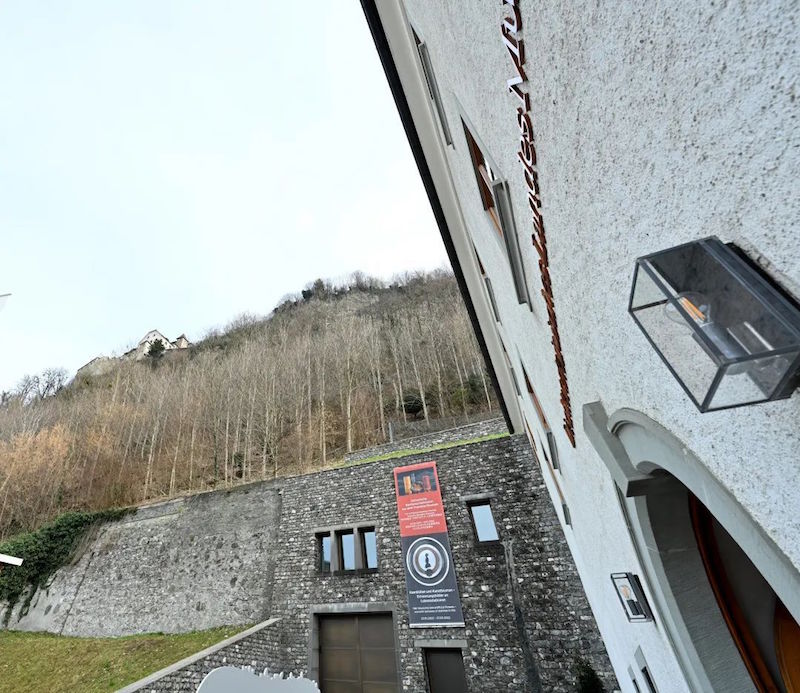
Liechtenstein National Museum
Why does Shanghai Bo attach so much importance to international cultural exchanges? This not only shows its cultural performance as a public cultural institution in a special period, but also highlights the consistent tradition of the Shanghai Museum of Art in the 70 years since its establishment. "The status and image of Shanghai Bo's international exchanges are reflected in these tangible data." Yang Zhigang told The Paper.
Over the past 70 years, the international exchange of Shanghai Expo has been at the forefront of the country: from the "passive" communication in the early days of the museum's establishment, to the compilation of "Dynamic Reference Materials for the Work of International Cultural Relics Museums" and "Relics Translation Collection" in the 1950s; Once I went abroad to participate in overseas exhibitions to the establishment of a cultural exchange office in the 1980s...
Yang Zhigang said that the Shanghai Museum is based on the goal of building Shanghai into an international metropolis with world influence. For the Shanghai Museum, instead of simply introducing exhibitions, it must enhance the ability to independently plan and culturally go out. He hopes to “promote the establishment of a worldview that is equal, inclusive, and shared by beauty and beauty through the museum’s exhibitions, and guided by such a worldview, telling the global audience about a credible, lovable and respectable China. "
Dialogue|Yang Zhigang
The Paper: In the 70 years since the establishment of the Shanghai Museum, what kind of development has its international exchange activities experienced?
Yang Zhigang (former director of Shanghai Museum): Since the Shanghai Museum celebrates its 70th anniversary this year, I have spent more than a year looking at the historical materials of the museum. From my personal understanding, I can roughly summarize the history of international exchanges at the Shanghai Museum. It is divided into four stages. The first stage is from the establishment of the Shanghai Expo in 1952 to the end of the "Cultural Revolution". The time span is relatively long. I call it the "initial stage". I checked some materials, focusing on the materials of several of our old curators, such as Yang Kuan, who was the first deputy curator of Shanghai Bo, who published "The Autobiography of Yang Kuan"; Wang Yiping, who was the director of the Shanghai Museum. The first officially appointed curator, although his tenure is very short; there are also Xu Senyu, Shen Zhiyu, etc. The information I have consulted has only some sporadic records, and some exchanges are still relatively "passive". For example, in the 1950s, British biochemistry and science historian Needham came to Shanghai. Needham studied the history of science and technology in China. He read the book about ancient Chinese iron smelting technology written by curator Yang Kuan and felt that this research was very important. I met Director Yang at the Jin Jiang Hotel and hoped that Director Yang would go to London and join his team to conduct collaborative research. Of course, curator Yang Kuan did not go, but he recorded this incident in his autobiography, which shows that we did have some international exchange activities at that time, and our research results were highly valued and affirmed by foreign counterparts. I read in Shen Zhiyu's Chronicle that he went to Japan in 1963 with Wang Yeqiu, the then director of the State Administration of Cultural Heritage, to participate in the "Yongle Murals" exhibition held by the State Administration of Cultural Heritage in Japan. communication between.
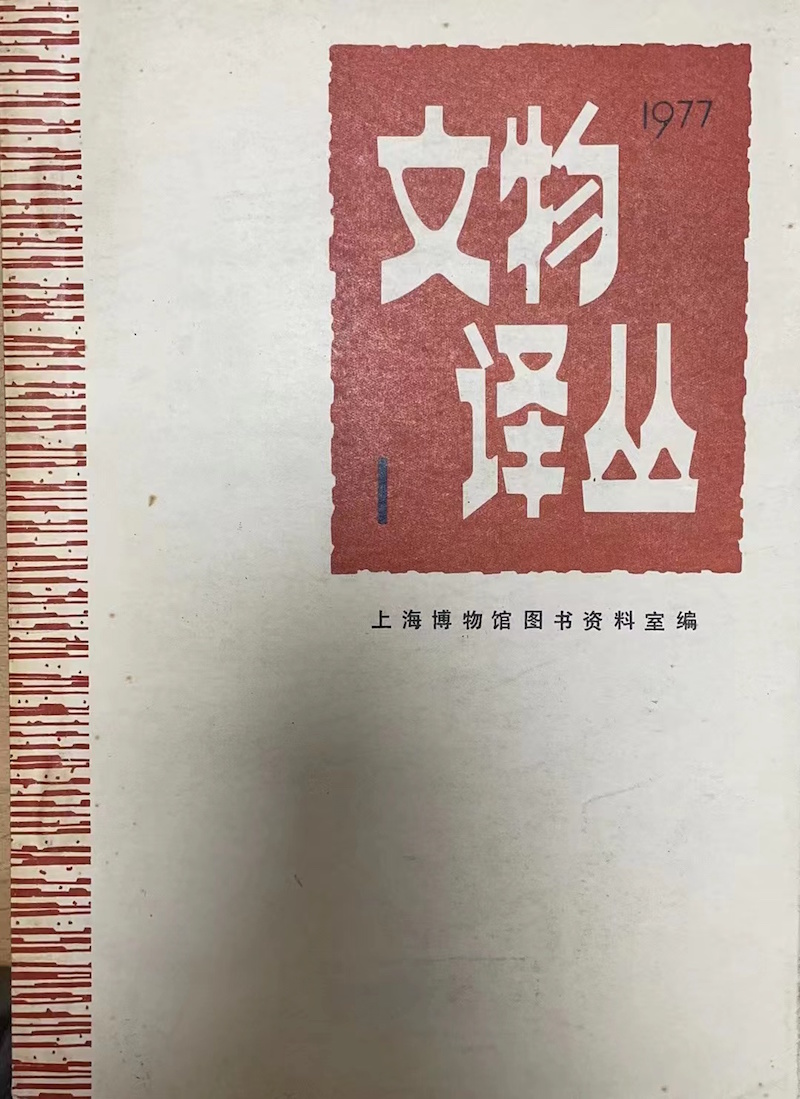
"Collection of Cultural Relics"
At this stage, the Shanghai Museum has also done a very meaningful thing in terms of international exchanges. Since the 1950s, it has compiled a very important document called "International Cultural Relics Museum Work Dynamic Reference Materials". Since 1958, It was temporarily suspended due to the "Cultural Revolution", and continued until 1991, compiling more than 130 issues of international cultural and cultural reference materials. In addition, internal learning materials such as "Relics Translation Collection" and "Museum Translation Collection" are also compiled. That is to say, when our personnel rarely have the opportunity to go abroad to communicate, Shanghai Bo has already begun to pay attention to the dynamics of the international museum circle, which is very advanced.
In terms of organizing exhibitions, I now see that in March 1976, curator Shen Zhiyu accompanied a delegation to Tokyo and Kyoto, Japan to participate in the exhibition of Chinese bronzes held by our country in Japan. As one of the exhibitors, the Shanghai Museum was one of the exhibitors. For the first time, Shanghai Bo cultural relics with clear records have gone abroad to participate in overseas exhibitions, which will have an impact on the future development of Shanghai Bo.
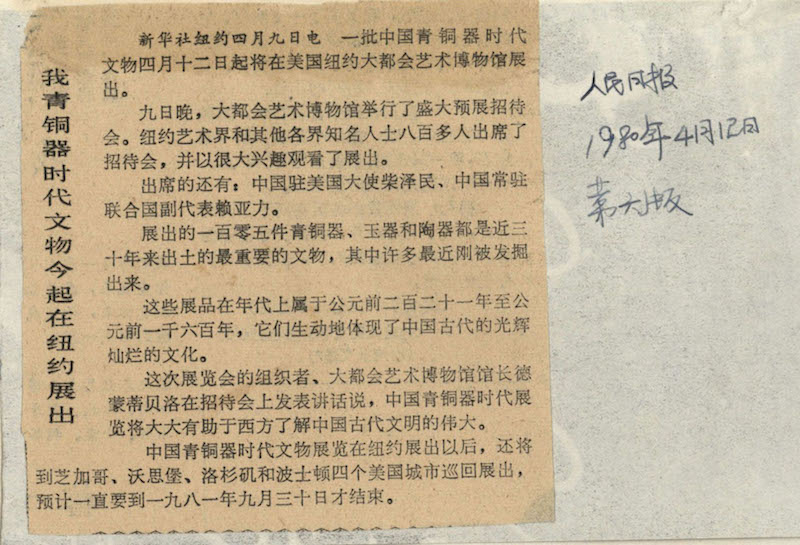
Reports about the exhibition "The Great Chinese Bronze Age"
The second stage was from the end of the "Cultural Revolution" to 1993, when Shanghai Bo started to build the People's Square building, which I call the "breakthrough period". There are several important things in this stage: In 1978, when we were still in the old building on Henan Road, we held an exhibition of Iranian paintings. We are all surprised to recall this past event. It was the first time that the Shanghai Museum introduced foreign exhibitions. Not from Japan and South Korea, nor from Europe and the United States, but from Iran. In the same year, Director Shen Zhiyu, as a member of the delegation of the Chinese Museum Director, went to the Federal Republic of Germany for inspection. I think this is a big event, which means that China The curator of the museum made an international appearance as a group image; in 1980, Shanghai held a "Chinese Arts and Crafts Exhibition" in the sister city of Yokohama, Japan. The special exhibition is called "Shanghai Museum Collection of Cultural Relics Exhibition". Although it is an attached special exhibition, the prototype of the cultural relics exhibition has come out after all. It can be regarded as the first independent overseas cultural relics exhibition of the Shanghai Museum, so its significance is extraordinary.
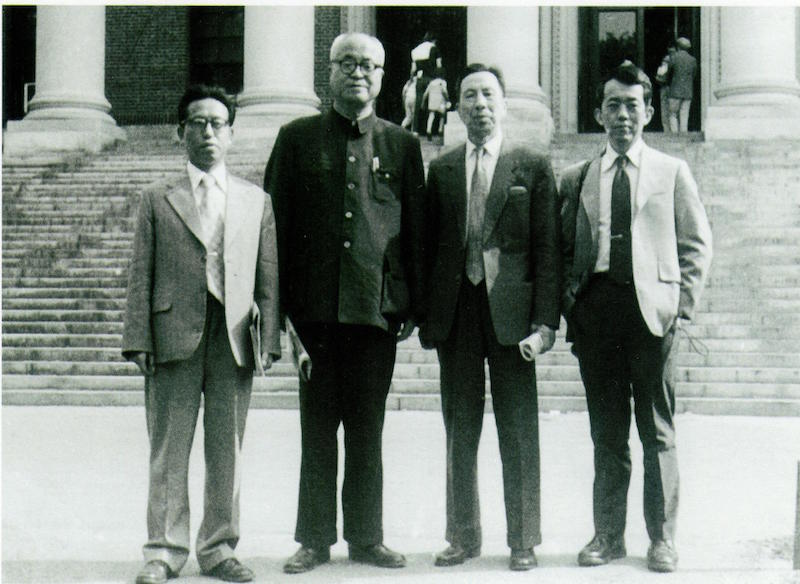
In June 1980, Ma Chengyuan (first from the left) participated in the "Chinese Bronze Age Symposium" held by the Metropolitan Museum of Art in New York, USA, with Zhang Zhengling (second from left), Zhang Guangzhi (first from right), Xia Nai (second from right) at Harvard University Books Group photo in front of the museum
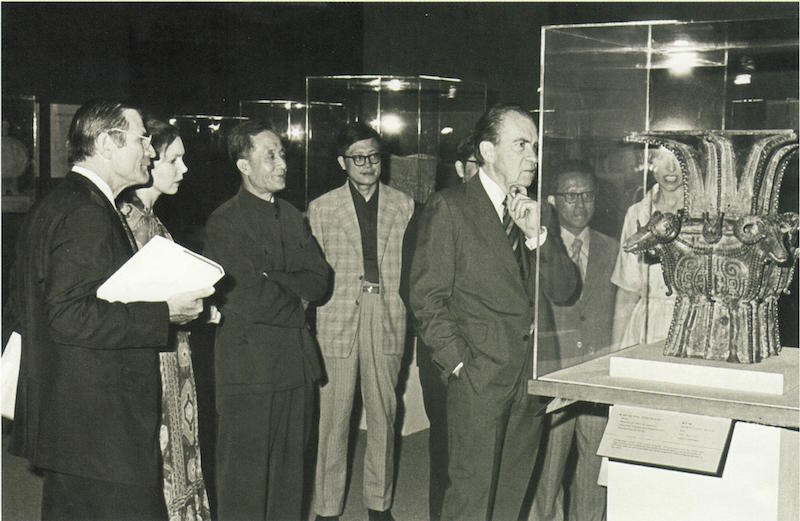
In February 1980, Ma Chengyuan, the then leader of the accompanying exhibition team, accompanied the 37th President of the United States, Nixon, to visit the "Great Chinese Bronze Age" exhibition held at the Metropolitan Museum of Art in New York, USA
In 1980, the "Great Chinese Bronze Age" exhibition hosted by the State Administration of Cultural Heritage was opened to the public at the Metropolitan Museum of Art. The Shanghai Museum was one of the important exhibitors. Mr. Ma Chengyuan, a bronze expert from Shanghai Expo, served as the accompanying working group. group leader. This exhibition is very sensational, it should be said that it is a grand event in the field of cultural exchange after the reform and opening up.
The following year 1983 was also an important year. In January, the Shanghai Museum held the "Shanghai Museum Collection of Chinese Bronze Ware Exhibition" at the Hong Kong Museum of Art, and in May held the "Shanghai Museum Collection - Six thousand years of Chinese art" at the Asian Art Museum of San Francisco. After the first stop in San Francisco, the exhibition continued to travel in Chicago, New York, and Houston for a year and a half, and it was very popular wherever it went.
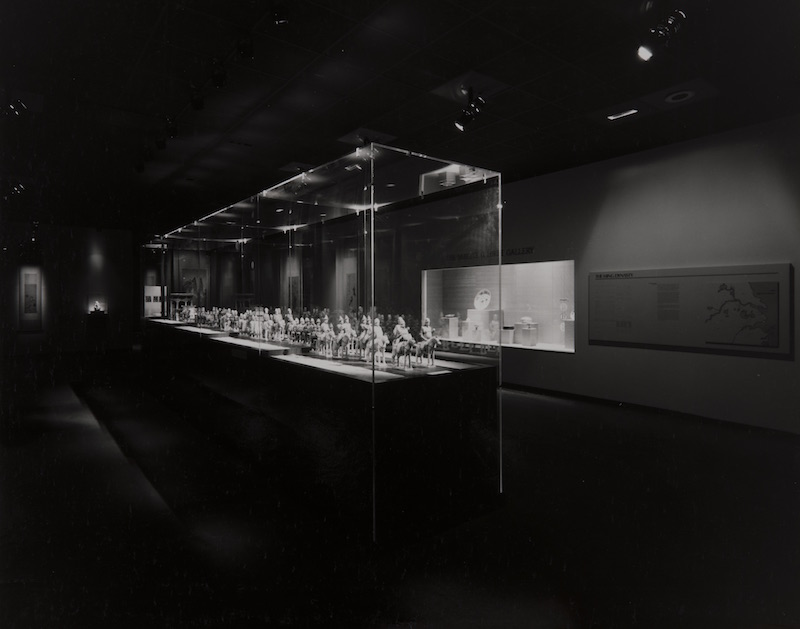
"The Collection of Shanghai Museums - Six Thousand Years of Chinese Art Exhibition" is on display at the Asian Art Museum in San Francisco

Related reports of "The Collection of Shanghai Museum - Six Thousand Years of Chinese Art Exhibition" exhibited at the Asian Art Museum of San Francisco
From 1984 to 1992, we had 22 outbound exhibitions, some of which were sponsored by us and some of which we participated. It should be said that at this stage, we have achieved a series of major breakthroughs in foreign exchanges. The forefront of the Chinese museum industry. On the other hand, in terms of our internal management system, in 1985, the Cultural Exchange Office was established, which is a department specially responsible for international cultural exchanges. had an impact. A few years ago, the director of the Tokyo National Museum, Mami Qiangu, visited the Shanghai Museum. When we chatted, we heard him say that the establishment of a cultural exchange office in the Shanghai Museum in the 1980s inspired the Tokyo National Museum. They learned from the Shanghai Museum. As a practice, a similar department was established.

In 1984, the "Ceramic Exhibition of the Past Dynasties in the Shanghai Museum" was exhibited in Japan
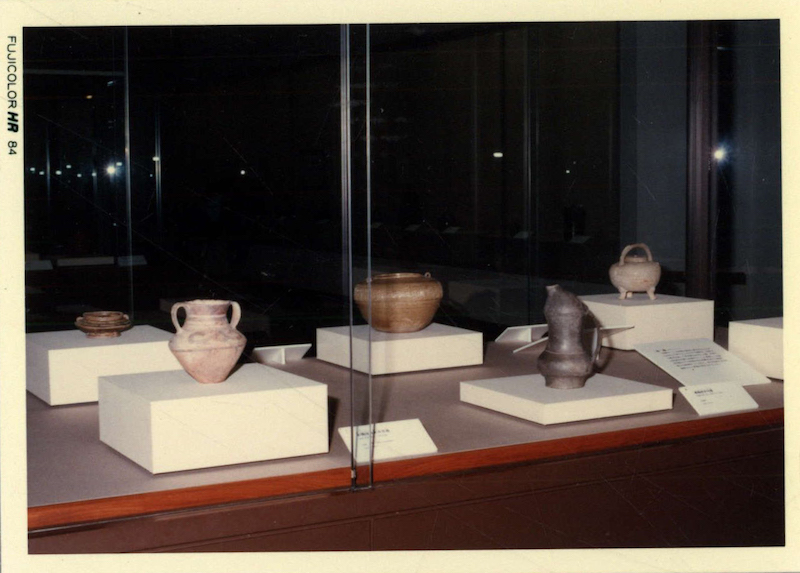
Photo of the exhibition hall of "Ceramics of the Past Dynasties in the Collection of Shanghai Museum"
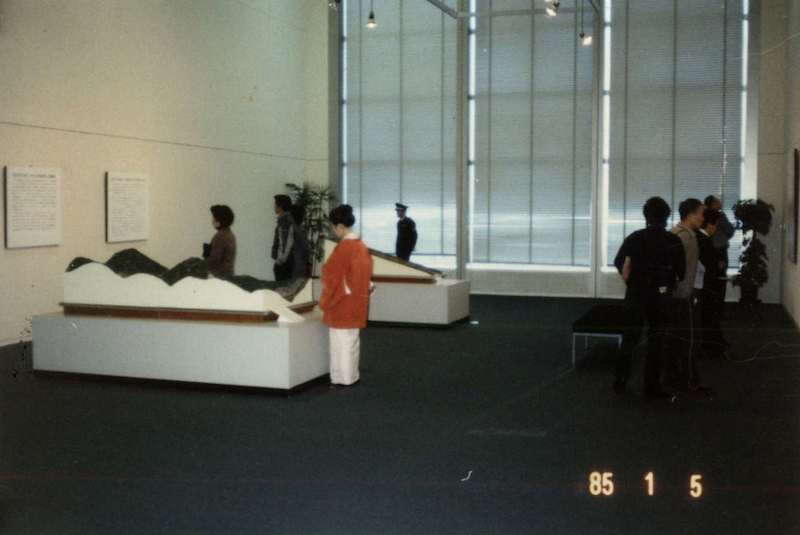
"Exhibition of Ceramics in the Collection of Shanghai Museum", audience viewing the exhibition
Since this stage, the Shanghai Museum has gradually formed a good tradition of making friends overseas and carrying out various exchange activities, including mutual visits, business training, scientific research cooperation, cultural relic donation, etc. In 1987, we also held a The first international symposium - "The Art of Painting by Four Monks in the Early Qing Dynasty", so this is the second stage of a series of breakthroughs.
The third stage is from 1993 to 2009. I call it the "expansion stage", which is about the construction of the Shanghai Museum's People's Square building. It should be said that the construction of the new building in People's Square was very difficult. At that time, the reform and opening up was in full swing, and there was no ready-made experience for many practices, so this path was broken out.
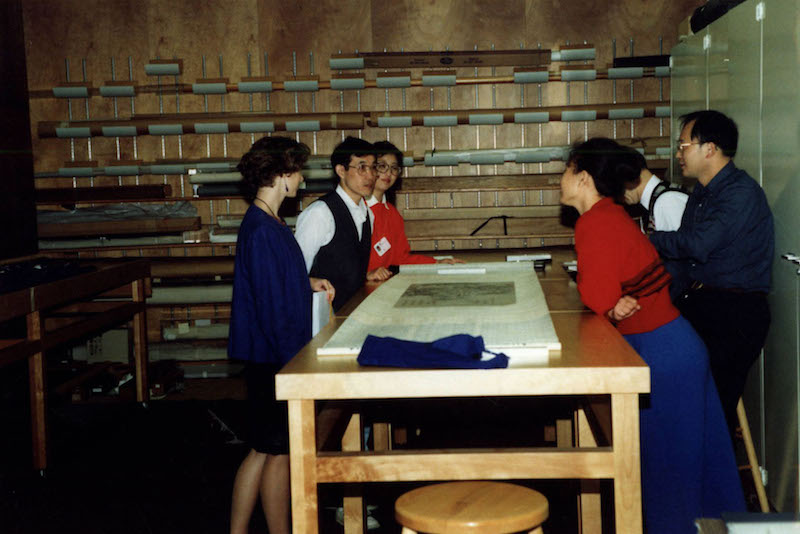
From April to December 1992, at the invitation of the Nelson Museum in the United States, the China Cultural Exchange Center organized the Shanghai Museum and the Palace Museum in Beijing to participate in the "Dong Qichang Century Exhibition" in the United States. This picture shows the handover of the exhibits
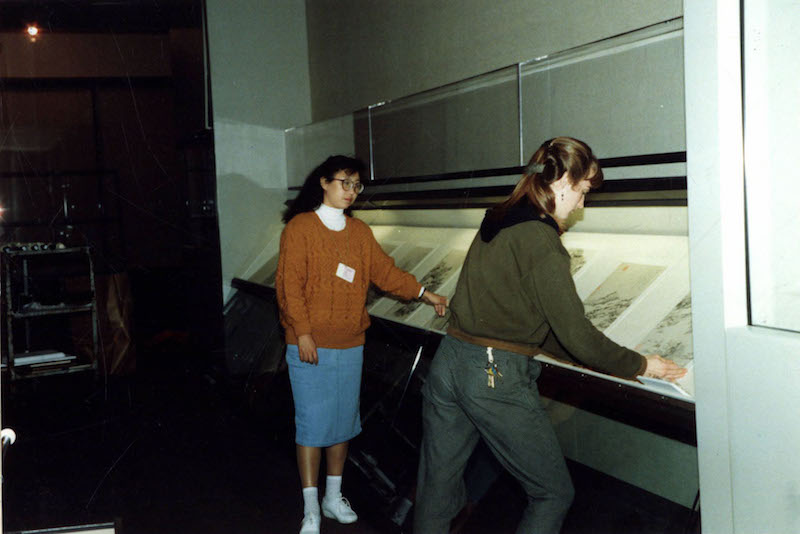
In 1992, the installation site of the "Dong Qichang Century Exhibition" in the United States
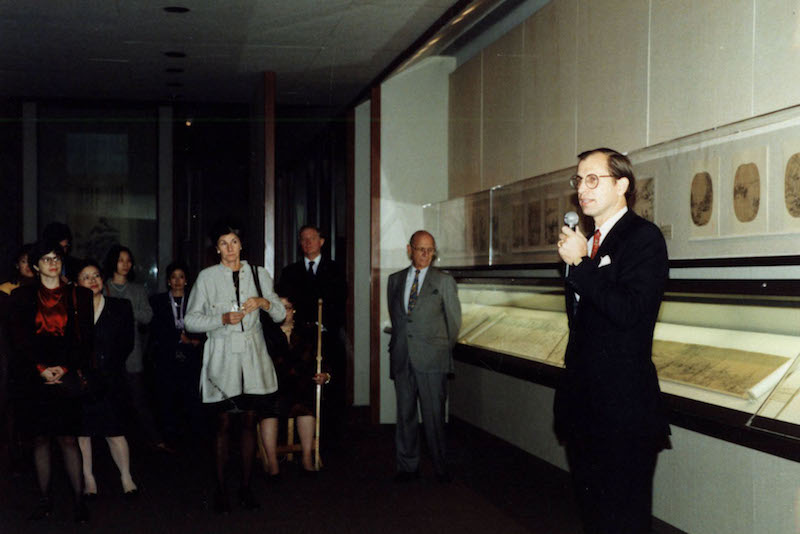
On October 22, 1992, the exhibition opened. He Muwen, then deputy director of the Asian Department of the Metropolitan Museum, delivered an opening speech.
Taking the building of the People's Square as an opportunity, not only accelerated the comprehensive construction of Shanghai Museum, but also promoted the development of modernization of Chinese museums. Now, when it comes to the modernization process of Chinese museums, the Shanghai Museum of People's Square is a case that must be mentioned, and its completion is inseparable from the international exchange of museums we are talking about today.
First, the goal of the Shanghai Museum at that time was very clear, that is, to benchmark against the world. There has always been a story circulating in the museum. When the curator Ma Chengyuan came to the United States, he stood on the steps of the Metropolitan Museum of Art and said, "Salute to the Metropolitan Museum." What does this mean? That is to say, China wants to build a modern museum, with the Metropolitan Museum of Art as the benchmark. So until now, we are still adhering to this concept, fully learning and drawing on the successful operation experience of the top international museums, and then building the Shanghai Museum into the world's top ancient Chinese art museum, so we have enough motivation to promote international exchanges.
Second, in the process of expanding international exchanges, we have received help from a group of international friends. It should be said that at the beginning of the construction of the new building in People's Square, we didn't know much about the world. They not only contributed money and efforts, but also gave us ideas. The construction of this pavilion is inseparable from the support of international friends, who have generously contributed to the construction of the new pavilion at the Shanghai Expo.
Third, there was a great environment that was very conducive to international exchanges. In particular, the development and opening up of Shanghai Pudong; Deng Xiaoping's southern tour speech ushered in a new wave of reform and opening up; China joined the WTO in 2001 and won a good international environment to promote the development of museums... Under such a background , we have carried out frequent exchanges, including inter-library cooperation in organizing exhibitions. According to my statistics, in the past 16 years, more than 70 outbound exhibitions have been held by Shanghai Bo.
There is also an unexpected result. At that time, a group of friends in the United States established the Shanghai Museum Friends of America Foundation. I have never heard of a Chinese museum having a second overseas foundation named after the museum. This can very well illustrate the achievements of Shanghai Bo in the process of international exchanges.
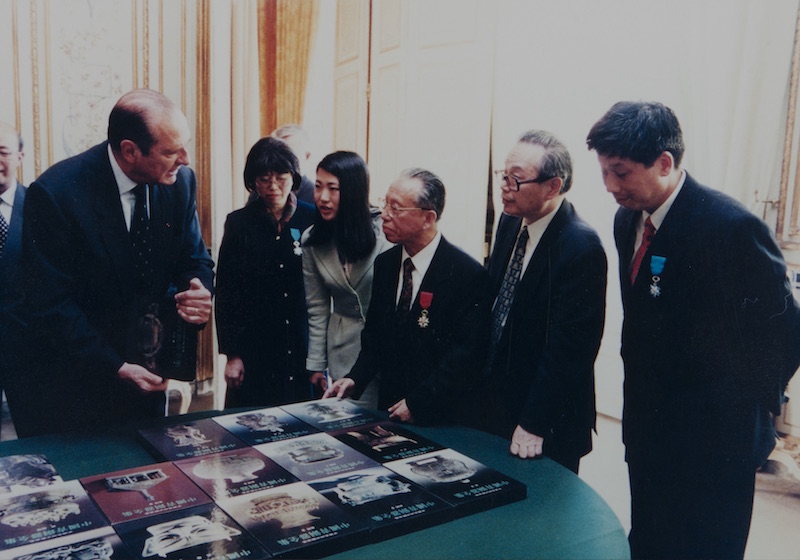
In 1998, in France, the two-way exchange of cultural relics between Shanghai Bo and the Paris Chinucci Museum was celebrated
The fourth stage is mainly from 2010 to the present, which I call the "deepening stage". Why use 2010 as the node? Because this year is very important for both Shanghai Museum and Shanghai.
In 2010, the ICOM Congress and the World Expo were held in Shanghai, in which the Shanghai Museum played its due role. The 22nd ICOM Congress was settled in Shanghai. The Shanghai Museum, as a participant in the whole process, made unremitting efforts from the active bid in the early stage, the careful preparation in the mid-term, and the practical implementation of various conference affairs in the later stage. The Shanghai Bo people led by Director Chen Xiejun fully embody the firm belief in pursuit of excellence and the enterprising consciousness of pioneering and innovative, and also show a brand-new international image. During the World Expo, the Shanghai Museum undertook the exhibition design projects of the Urban Footprint Pavilion and the World Expo Museum, and won the honor. This is something we are proud of, and it is closely related to the improvement of Shanghai's status as a city.
From 2010 to the present, the international exchanges of Shanghai Museum and even the Chinese museum community have shown the following three new characteristics. First, the process of globalization in the field of museums has become more significant, and Chinese museums and the international museum community have been deeply integrated. Second, the national leaders proposed the construction of the "Belt and Road". We have also implemented this idea in the work of museums and stepped up exchanges and cooperation with national museums along the "Belt and Road". Third, strengthen the ability of museums to allocate global resources. Over the years, Shanghai Bo has been doing this work, and we also put great emphasis on the ability of independent planning or joint curation of exhibitions. It should be said that in the past 10 years, Shanghai Bo has significantly improved in this regard.
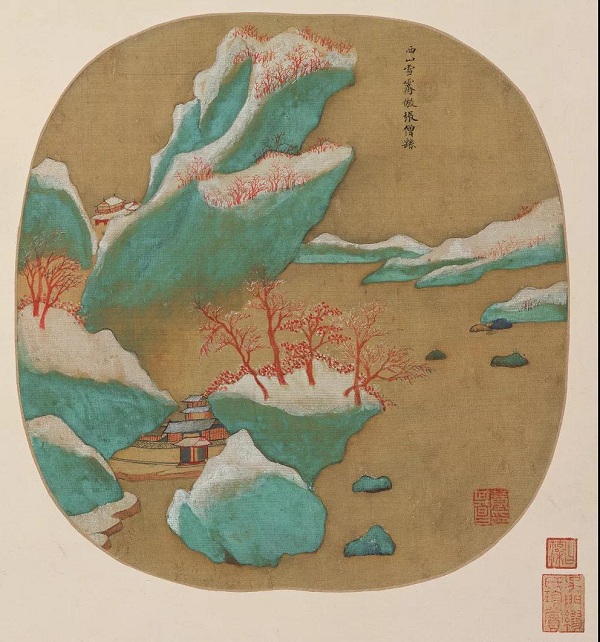
Dong Qichang's "Eight Views of Yan and Wu" in the collection of Shanghai Museum
For example, in 2012, we held the "Blue and White Porcelain - Yuan Dynasty Blue and White Porcelain Exhibition", exhibiting 90 heavyweight Yuan blue and white porcelain treasures, involving more than 30 exhibitors around the world, which can be described as the image of the museum's ability to allocate global resources A glorious appearance.
The "Danqing Treasure Boat - Dong Qichang's Painting and Calligraphy Art Exhibition" held in 2018 is also one of them. It brings together important collections of 15 important art institutions at home and abroad, of which 9 are overseas art institutions. "General Mobilization" style of Dong Qichang's calligraphy and painting art exhibition. There is also the "East-West Fusion" held during the epidemic, which brought together the cooperative forces of more than ten museums around the world.
The Paper: In the exhibitions held by the Shanghai Museum, outbound exhibitions also accounted for a certain proportion, and even in the more than two years since the epidemic, the Shanghai Museum has not stopped external exchanges and exhibitions, which is very difficult. Can you introduce the outbound exhibitions that Shangbo has held over the years? What kind of ideas and concepts are you adhering to in planning this kind of international exchange exhibition?
Yang Zhigang: I won’t go into details if it’s too early. Let me introduce some outbound exhibitions since the 13th Five-Year Plan. We realize that it’s not enough to just come in, we must go out. Take responsibility.
According to my statistics, from 2016 to now, Shanghai Bo has exhibited 22 exhibitions overseas, of which 7 are exhibitors, and the remaining 15 are sponsored or co-sponsored.
The Shanghai Museum will hold a total of four outbound exhibitions in 2021, the National Museum of Korea's "Chinese and Korean Zodiac Exhibition in the Year of the Ox", "Ancient Chinese Bronze Civilization" exhibition, "Lacquer, Painted Asia" exhibition, and an exhibition in Abu Dhabi. The Floating Museum's "Dragon and Phoenix - Thousands of Years of Artistic Blending between China and the Islamic World" exhibition, in which the "Ancient Chinese Bronze Civilization" special exhibition won the "International, Hong Kong, Macao and Taiwan Cooperation" in the national top ten exhibition exhibition promotion activities. prize".
Some media and institutions will use such data to explain the status and image of Shanghai Bo's international exchanges. I emphasize that whether doing research or doing practical work, we must have a picture of the world in our hearts. While helping Chinese culture to go global, we must look at the world and have the world in mind. If you have a picture of the world in your mind, you will have more motivation and direction to go out, whether in good times or in adversity. Through the exhibitions of the museum, we will promote the establishment of an equal and inclusive worldview that, in the words of Mr. Fei Xiaotong, is "beautiful and beautiful." Dear and respectable China. In this regard, I think the museum can do a lot of work, and there is a lot of work for us to develop.
The collection of museums is not only the heritage of the nation, but also the common heritage of all mankind, and should be shared with the world. Through the sharing of cultural relics, we will unite and spread the common values of truth, goodness and beauty.

Zizhong Jiang Pan Shang Bo (exhibition in Greece)

Scroll of Qing Wu Hong and Qing River Travels (Partial, Exhibit in Greece)
Regarding the curatorial concept and ideas, I will summarize the following characteristics. Our positioning is to build the world's top ancient Chinese art museum. The first feature reflected in the curatorial idea is to focus on the research and presentation of art and art history. . For example, in 2018, the exhibition "Chinese Fragrance: Ancient Chinese Fragrance Culture" co-curated with the French Senucci Museum was exhibited at the Senucci Museum. We compared the ancient Chinese incense culture with the French incense culture, reflecting the differences and similarities of the two cultures. Fragrant culture is actually a very attractive field that has rarely been presented in this way in the past. The exhibition was very popular in Paris, and the French newspaper Le Figaro published an article for the exhibition, talking about the origin of Chinese incense culture earlier than France. In 2021, the Shanghai Museum will exhibit "Dragon and Phoenix - Thousands of years of artistic fusion between China and the Islamic world" at the Louvre Abu Dhabi, exploring the exchange and fusion of culture and art between China and Islam through some typical artifacts. In 2021, our pavilion will hold the "Fusion of East and West - China-Europe Ceramics and Cultural Exchange Special Exhibition", which tells about the Sino-European trade and cultural exchanges in the early days of globalization. It should be said that our research in many fields was not so in-depth. With the construction of the "Belt and Road" initiative by the state, the deepening of this line of thinking has also opened up many new perspectives for us. Fusion" in this exhibition.
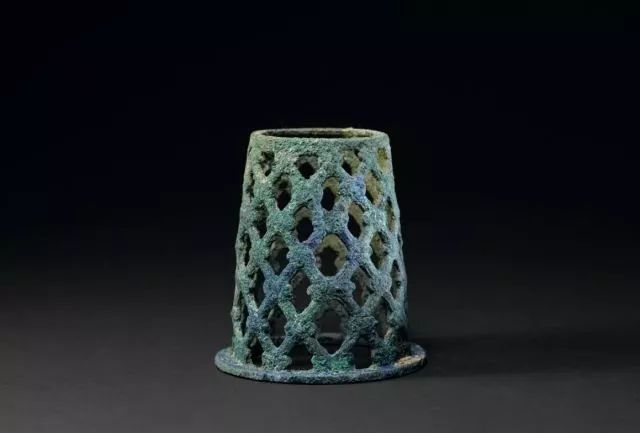
Warring States Luowenxun Collection of Shanghai Museum (exhibited at the Chinnucci Museum in Paris, France)
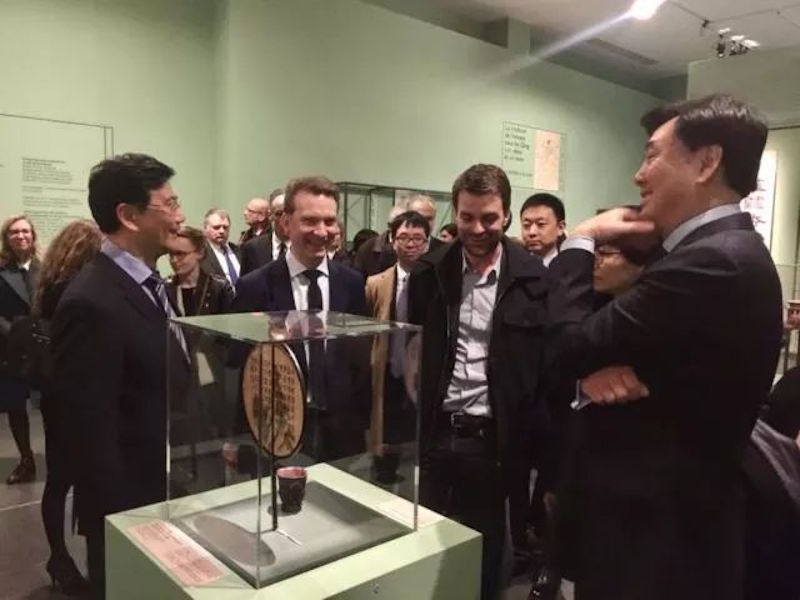
Chinese Ambassador to France and Ambassador to Monaco, and the First Deputy Mayor of Paris visited the exhibition "Chinese Fragrance: Ancient Chinese Fragrance Culture"
The second feature is the study and display of the history of Chinese civilization. In recent years, senior officials have attached great importance to the study of the history of Chinese civilization, including deepening the project of exploring the origin of Chinese civilization. At the end of July, the opening chapter of our "Why China" archaeological exhibition series "Zhaizi China - Henan Xia, Shang and Three Dynasties Civilization Exhibition" has officially met with the audience. A study of the history of Chinese civilization. In fact, this idea has been implemented in our outbound exhibitions very early, and we also pay attention to the exchanges and mutual learning between human civilizations. The Shanghai Museum launched two special exhibitions at the same time in July this year, "Talasa: Marine Civilization and Greek Art" and "Zhaizi China: Henan Xia, Shang and Three Dynasties Civilization Exhibition", intending to build such a large platform, from river civilization and ocean From the perspective of civilization, mutual learning and comparison of civilizations are carried out.
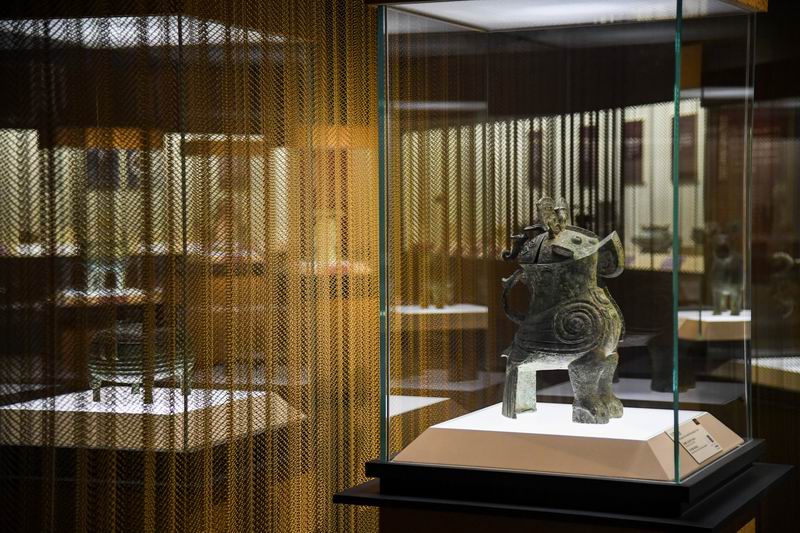
"Owl Zun" at the exhibition "Why China"
In 2021, the Shanghai Museum will go to the National Museum of Korea to hold a special exhibition "Chinese Ancient Bronze Civilization", which is also an exhibition focusing on the history of Chinese civilization. This exhibition was originally intended to be the largest export exhibition of bronze ware in the history of Shanghai Bo. Due to the repeated epidemics last year, our experts were unable to go out, escort the cultural relics, or go to the site to set up and dismantle the exhibition, so the specifications of the exhibits could only be reduced. Although the scale has been reduced, we feel that the more special the period is, the more inter-museum exchanges cannot be stopped. Even if some compromises are made, we must insist on holding the exhibition.
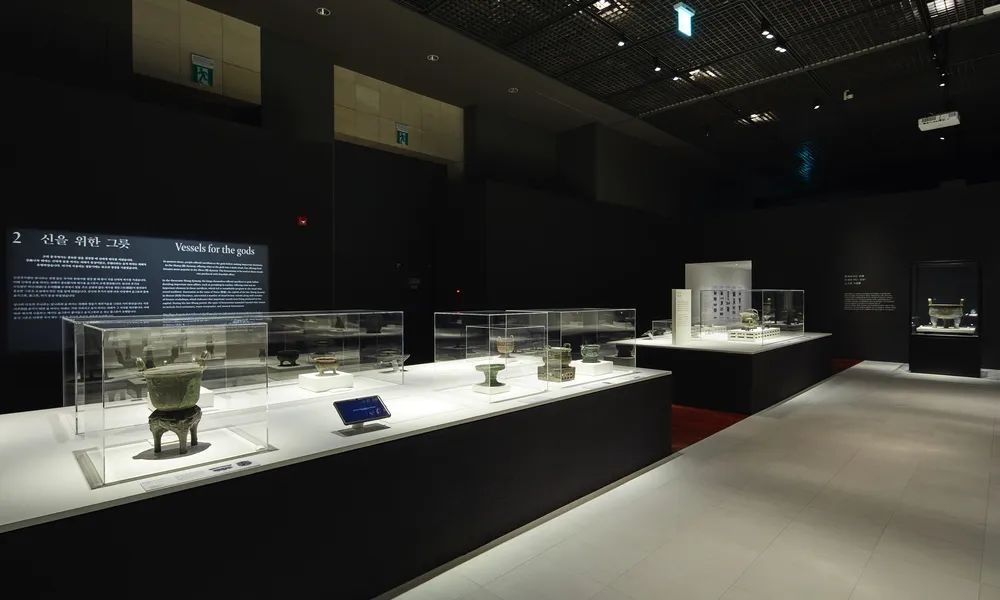
In 2021, the Shanghai Museum will go to the National Museum of Korea to hold a special exhibition site of "Ancient Chinese Bronze Civilization"
The third feature is that we focus on improving our ability to communicate with the world and have a greater right to speak. The proportion of our self-curated or co-curated exhibitions is quite high, and some of the exhibitions are our overall output, from collections to exhibition planning, we dominate. For example, in the first half of this year, the "Exhibition of Chinese Bamboo Carvings", curated by the Shanghai Museum, opened at the National Expo in Liechtenstein. Collection of Ancient Chinese Porcelain Treasures Exhibition" opened at Palazzo Venezia in Rome; in 2018, Shanghai Museum and Shanghai Science and Technology Museum cooperated to hold "Blue and Blue - Origin, Development and Exchange of Blue and White Porcelain" in Uzbekistan. This is an exhibition jointly planned by Chinese institutions. ; In 2019, Shanghai Bo held the "Coin Journey Exhibition" in Hungary to serve the construction of the "Belt and Road" and promote cultural exchanges among countries along the route...

"Fusion of East and West - China-Europe Ceramics and Cultural Exchange Special Exhibition" exhibition site
There are also some exhibitions that were finalized through repeated discussions between the two teams. For example, "East and West Fusion - China-Europe Ceramics and Cultural Exchange Special Exhibition" was organized. It was in 2015. We visited the Guimet Museum in France. The director of the Guimet Museum recommended us a ready-made exhibition. Later, through our experts in the museum After repeated discussions, I thought that it would be better to put our own curatorial ideas in it, so the final exhibition presentation has little to do with the original one, and is basically a brand new exhibition. In 2020, the "Black Rock Shipwreck Treasures Exhibition" held by us is also a ready-made and mature exhibition in Singapore, but when we talked about the exhibition cooperation, we proposed to re-plan it ourselves, adding related artifacts collected by many domestic museums and "Black Rock". "No." water cultural relics are displayed in comparison, such as the eight-edged gold cup from Hejiacun's cellar, the eight-edged gold cup from the Liao tomb in Turji Mountain, and the three gold cups of the "Black Stone" eight-edged gold cup with water-style music patterns in the exhibition hall to realize the "century". Meeting", these are the "golden ideas" of the Shanghai Bo team.
With these examples, what I want to make clear is that for the Shanghai Museum, what we need to do is not simply to introduce exhibitions, but to enhance the ability of independent planning and cultural going out.
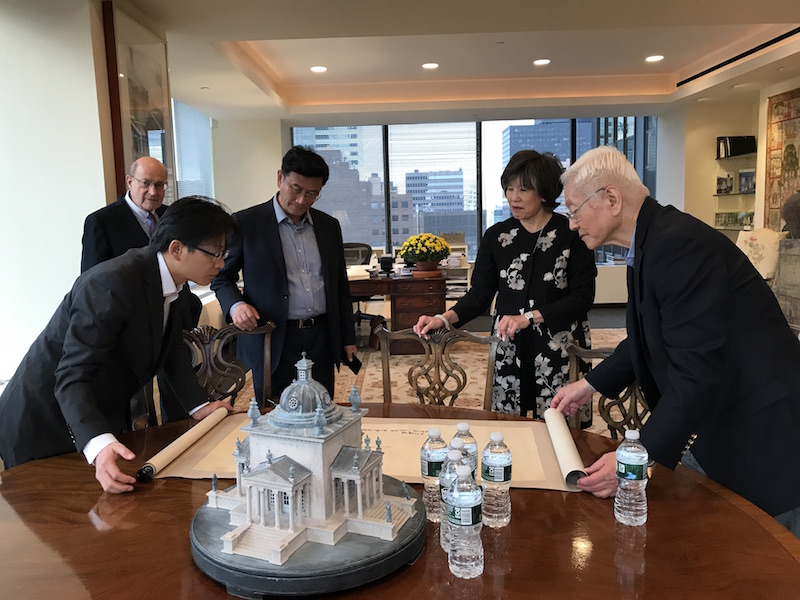
Meeting with some board members of the Friends of America Foundation of Shanghai Museum, New York, October 2019
The Paper: What do you think of the importance of international exchanges in museums? How does Shanghai Expo establish its image status in the international cultural and expo industry and spread Chinese culture and Chinese image through international cultural exchange activities such as cultural relics loan and exhibition export?
Yang Zhigang: The significance can come from many perspectives, including the perspectives I have just mentioned. As a museum curator, I especially value that as an institution, we need to improve and improve, and we need to find experts to help us. Challenges will also bring us professional progress.
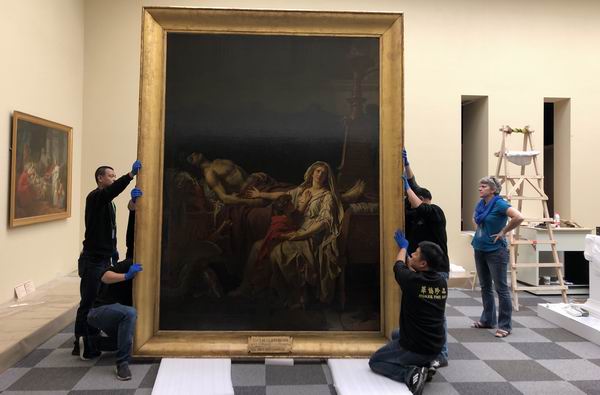
In 2019, Shanghai Bo held the exhibition site of "The Birth of Art: From the Sun King to Napoleon - Collection Exhibition of the National Academy of Fine Arts in Paris"
I remember that we co-organized with the British Museum "British Museum Hundred Things: Condensed World History", and cooperated with the French Quai Branly Museum to hold "Floating in the Sea: The Pacific Art Treasures from the French Quai Branly Museum", which all have Many stories touched me deeply. In fact, Europeans have a sense of superiority in their cultural bones, especially in the field of museums. Their sense of superiority will surpass that of the United States. This is reflected in the fact that when the exhibition is set up and dismantled, they are very insistent on their own set of procedures and requirements. In the "British Museum Hundred Objects Exhibition" cooperation, we showed strong professional ability, from the extraction and placement of a cultural relic, precise gestures, angles to subtle lighting, the tacit understanding of our cooperation on the exhibition site... ... After the opening ceremony, an expert from the British Museum told me, "The Shanghai Museum is the first in Asia." Later, when the Suzhou Museum West Hall and the British Museum cooperated in the exhibition, the British Museum also specially invited Shanghai Autobot experts to provide support on the spot.

"British Museum Hundred Things" exhibition poster
In addition, the museum is also an important place to carry out public diplomacy. "Talasa: Maritime Civilization and Greek Art", which just opened in July this year, is a good example. Although the exhibition is not large in scale, as the first exhibition opened in Shanghai after the epidemic was closed, it has received great attention from all walks of life. . Initially, the Consulate General of Greece in Shanghai wanted to hold a large-scale exhibition opening ceremony. Consul General Mr. Konigo (who had just left his post) even postponed his return to China. However, due to the restrictions of the epidemic prevention policy, we could only limit the number of people to certain range. At the opening event, the guests admired Shanghai Bo's ability to hold an international exhibition shortly after the reopening. This reflects the importance of museums in cultural exchanges from one aspect. Museums are a very important platform for people-to-people and cultural diplomacy. During the epidemic, the non-governmental diplomacy of museums is even more important.
The museum is not only a second classroom for children, it also represents the height of our civilization, the image of our country, and whether the city and country are attractive enough.
During my tenure as the director of the Shanghai Museum, I had received two very special world-renowned scholars, one was the French sinologist Mr. Wang Demai (who passed away in 2021), who was a scholar I respected. His views are quoted in his own writings. On New Year's Day in 2020, Mr. Wang Demai, who was in his 90s, took advantage of this holiday to gather his four generations of descendants scattered all over the world to Shanghai. He contacted me and told me that he must visit the Shanghai Museum. The four generations gathered in Shanghai Museum. The whole afternoon was spent in the exhibition hall; another was the late Chinese physicist Zhang Shousheng, who brought his wife to the Shanghai Museum a year before his death in 2018. The Fudan alumnus told me that everyone now emphasizes the role of technology, but the role of culture is equally important. He enjoys visiting museums around the world. Through these two cases, we can see where the attraction of a city comes from. Culture has a deeper power, and museums represent an enduring force through which one can gain insight into the heritage of the city and country.

Mr. Wang Demai and his family visited Shanghai Museum
The Paper: You also talked about the important role of the East Pavilion as a "window". It is the window through which we see the world, and the world sees Shanghai through this window. With the completion and opening of the East Pavilion, will it help the international cultural exchange of Shanghai Bo to reach a new level? What new challenges will Shanghai Bo face in international exchanges and cooperation in the future?
Yang Zhigang: The East Hall has obvious advantages in terms of hardware facilities. The main hall of People's Square has been built for a long time and is limited by the height and area of the exhibition hall. The east hall will be improved in this respect. The exhibition hall on the first floor of the East Hall is nearly 8 meters high, and some large-scale cultural relics can enter our exhibition hall. In the future, the selection of exhibits will be less restricted. In addition, our ability should be improved accordingly. As an ancient art museum, how can we play a better role and show the world our excellent civilization achievements.
In addition, how to face the new normal of the epidemic may be a big challenge in the future. It is difficult to say when the epidemic will end, so make a long-term preparation. We are faced with many uncertainties. How to enhance our own certainty to deal with external uncertainties is something we must consider.
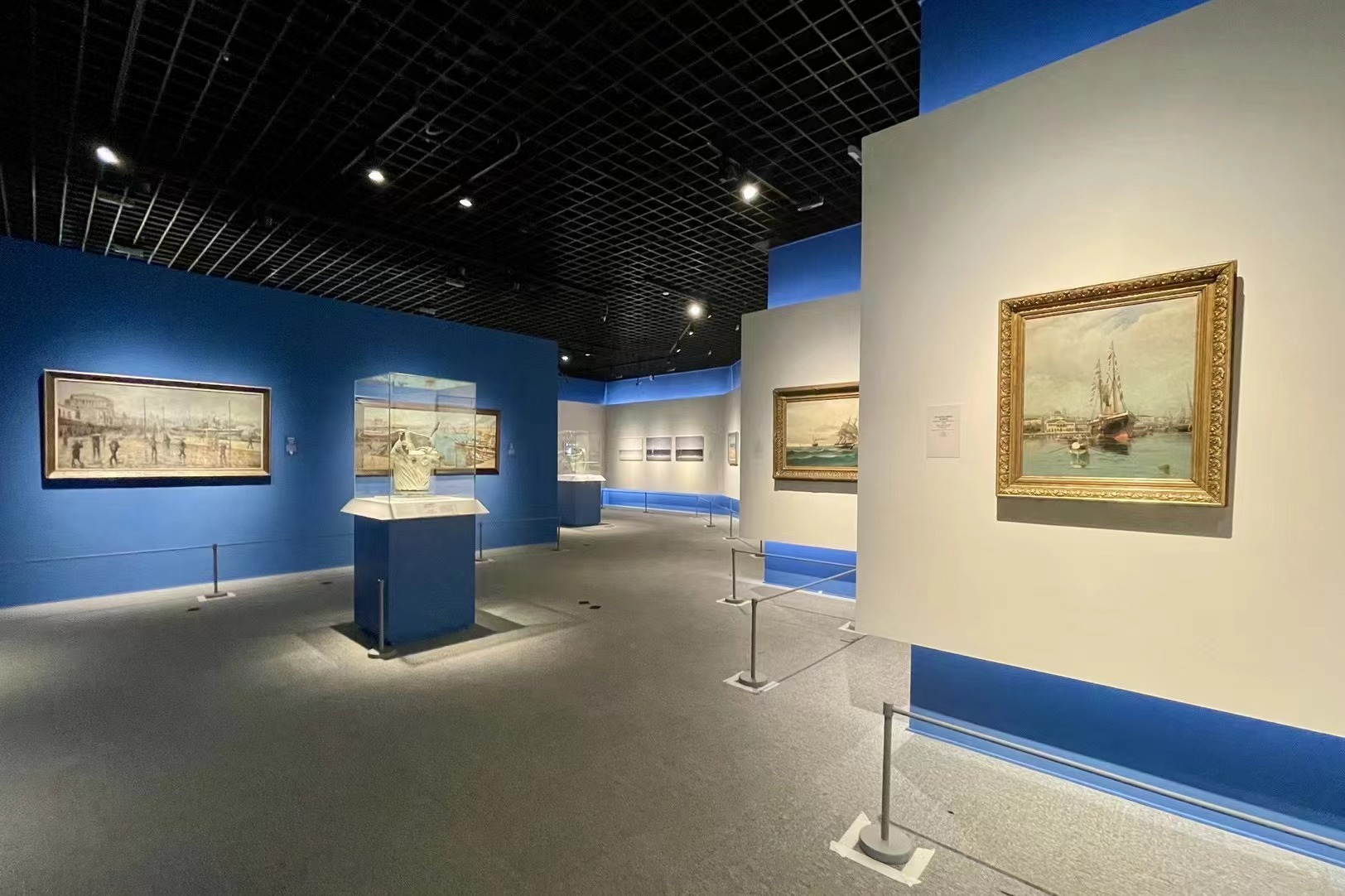
"Talasa: Maritime Civilization and Greek Art" exhibition view
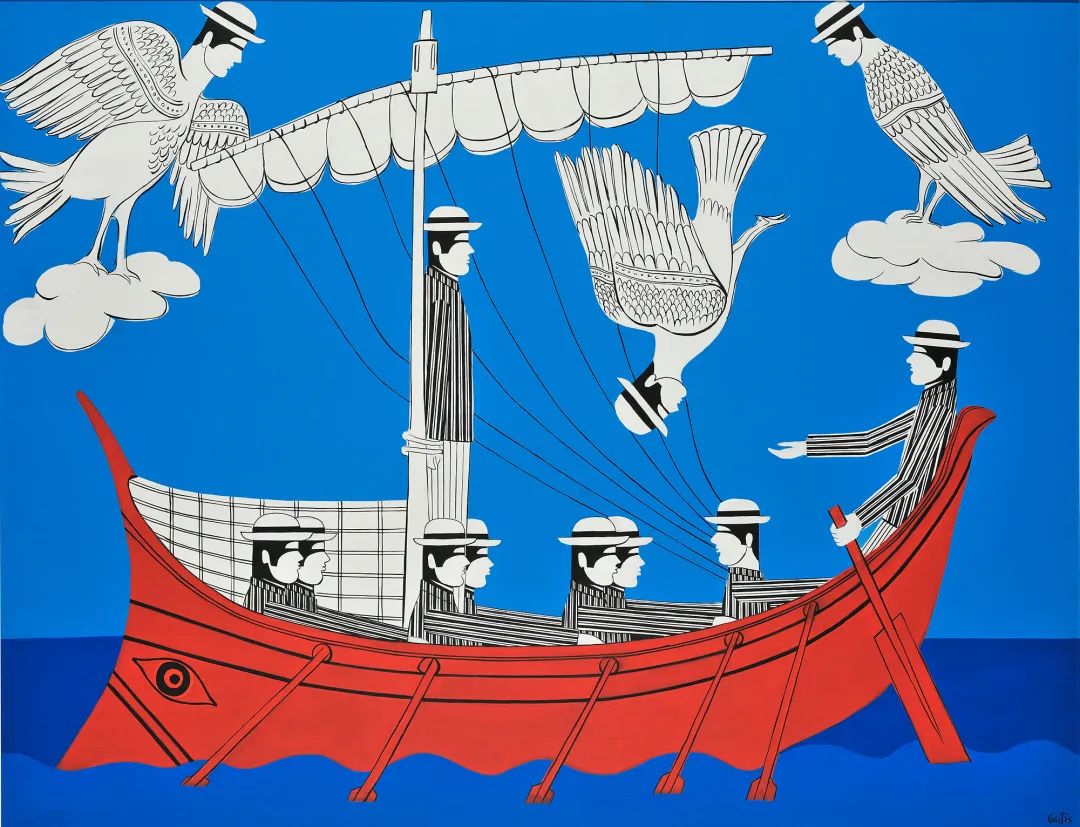
Giannis Gettis, Siren-Odysseus, 1980, oil on canvas, 150x195.5 cm, National Gallery - Collection of Alexandros Sussos Museum
Just like preparing for the "Greek Art Exhibition" and "Henan Xia, Shang and Zhou Dynasty Civilization Exhibition", my colleague reminded me that we used to say that we should seize the "window period". When we were planning a year or two ago It is necessary to study and judge where the next "window period" is, and then seize the opportunity to hold exhibitions during the window period, such as "Bao Li Fengwu - Heishi Shipwreck Treasures Exhibition", "East and West Integration - Sino-European Ceramics and Culture" "Exchange special exhibition" We all rushed to such a window period, and the exhibition was relatively successful in the end. But now "window" has become "door gap", we want to grab the "door gap". The "door gap period" is shorter. We must take the initiative to take the initiative to face the "door gap". Squeeze in there is a chance, otherwise you will always be outside the door to achieve nothing.
Now for the exhibition, what we are emphasizing is the combination of inner circulation and outer circulation. If it is not possible to hold an international cooperation exhibition, take a step back and use the Shanghai Museum's own collection to hold the exhibition. In the current situation, to hold a joint exhibition, as long as the other party's cultural relics have not reached the museum, we dare not say that we will carry it out, and we dare not even hang posters. Therefore, we must overcome the uncertainty of the current situation with our own certainty. This will be a very big test.
In addition, the international environment has also changed a lot, especially the impact of the Russian-Ukrainian war. Now I have received some feedback. After talking about the cooperation for many years, the other party said that it would be cancelled. This is a problem that Shanghai Bo will face directly, so the choice of partners should be more careful.
We still have to take the road of globalization and internationalization. With this "chain" of cooperation, we are not afraid. Once the "chain" is broken, it is difficult to restore it without a process.
The Paper: Has the Shanghai Museum's international exchange history also followed the pace of Shanghai's development? What role does it play in building Shanghai into a modern international metropolis with world influence?
Yang Zhigang: This relationship is too big. Since the reform and opening up, especially since 1993, the Shanghai Museum has been able to break through, expand, and deepen its development, which is actually closely related to the city of Shanghai. The changes brought about... Shanghai has a development orientation of "global excellence city", and Shanghai Bo must match this goal, one is "global" and the other is "excellent". The development of the Shanghai Museum is based on the goal that the city of Shanghai is going to strive for, and is aligned with this goal. Our positioning is "the world's top ancient Chinese art museum", which is to match the goal of "global excellence city". Why do scholars like Zhang Shousheng and Wang Demai visit the Shanghai Museum in Shanghai? This is all related to the image and charm of the city. We cannot leave Shanghai to talk about the Shanghai Museum. So this year's 70th anniversary of the museum, we found a good angle, that is, "a museum and a city", the two are interactive.
After the reform and opening up, the Shanghai Museum has always been the vanguard in the industry. Now that we are celebrating the 70th anniversary of the establishment of the museum, how can we draw strength from the past and continue to be the vanguard? Strengthening international exchanges and enhancing the allocation of global resources is a very important ability to be a good leader. Only in this way can we match the city of Shanghai.

In the design of the façade of Shanghai Bo East Pavilion, the curve symbolizes the ocean, and the flat symbolizes the land, reflecting the concept of "intersection of sea and land"

The four sides of the Shanghai Bodong Pavilion have different openness and public space designs
Shanghai is a city with its unique geographical features and cultural characteristics. The architectural appearance of the Shanghai Bo East Pavilion reflects the characteristics of "the intersection of sea and land". In fact, both the sea and the land are very important images in contemporary China. Our country proposes "coordination of land and sea" from a strategic perspective. It not only pays attention to land development, but also accelerates the construction of a maritime power. The coordinated development of sea and land, especially for coastal cities like Shanghai, must do a good job of "coordination of land and sea". , we can only embrace the future and modern civilization if we look to the ocean and the outside.
Over the years, we have been implementing the idea of "coordination of land and sea" into some of the topics selected for museum exhibitions. For example, "Talasa: Marine Civilization and Greek Art" opened in July, highlighting marine civilization. In 2019, "Floating in the Sea: Pacific Art Treasures from the Musée Quai Branly in France", which was cooperating with Quebrilliard, talked about a more mysterious sea area. The exhibition shows that the ocean has infinite possibilities to be explored.
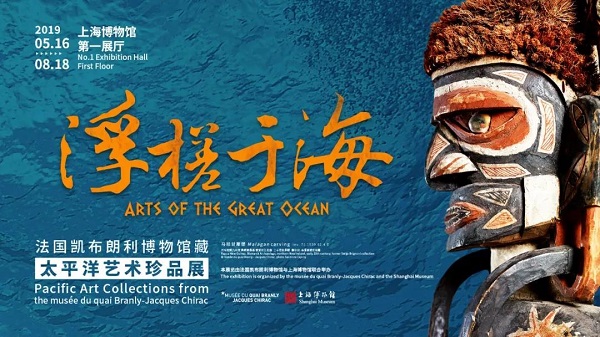
In 2019, the exhibition poster of "Floating in the Sea: The Pacific Art Treasures from the Musée Quay Branly"

Malagam Ritual Sculpture Papua New Guinea, Bismarck Islands, North of New Ireland Late 19th to early 20th century Inv. 71.1912.1.6 Donated by Robert Showillot to the collection of the Musée Quai Branly, France
Deng Xiaoping once told our comrades in Shanghai that there are several special zones in China. Zhuhai faces Macau, Shenzhen faces Hong Kong, Xiamen faces Taiwan, and Shanghai faces the Pacific Ocean. Therefore, Shanghai people must have a broad and far-reaching sense of the ocean.
We said we want to build a community with a shared future for mankind, of which the "community with a shared future for the ocean" is the concrete manifestation of the governance concept of a community with a shared future for mankind on ocean issues. The exhibition is actually related to the ocean, and it also reflects the idea of "coordination of sea and land" that we should pay attention to in the future. This is the historical mission that the city of Shanghai should undertake.
The Paper: On June 22, the Hong Kong Palace Museum opened. Hong Kong is a place where Chinese and Western cultures are exchanged and integrated, and the Hong Kong Palace Museum is positioned to "play the role of a contact person" and "play the role of connecting foreign museums" in the exchange of Chinese and Western cultural expositions . As a museum that also focuses on displaying ancient art, how does Shanghai Bo define its relationship with the Hong Kong Palace Museum and go further on the road of "internationalization" of the museum?
Yang Zhigang: The Hong Kong Palace Museum opened, but because of the epidemic, the foundation of its collection, including whether there is a future collection plan, is not as in-depth as being there. From the current point of view, it is more that it wants to transport some important cultural relics of the Beijing Palace Museum to Hong Kong for exhibition in stages and in batches through cooperation with the Beijing Palace Museum. I think this can be regarded as a solution and idea to solve the problem, so that the audience in Hong Kong can also see the cultural relics of our mainland.

Hong Kong Palace Museum
In terms of international exchanges, if they don't have their own collection, it remains to be seen how it will develop next. But I think the Shanghai Museum and the Hong Kong Palace Museum can be very closely united to do a lot of work together, including some complementary work. The Shanghai Museum has the advantages of its own collections, as well as the advantages of curatorial and talented personnel. I think it is still very close to Hong Kong.
In recent years, Shanghai Bo has signed a cooperation agreement with the Hong Kong Leisure and Cultural Services Department. Last year, it also signed a cooperation agreement with the Hong Kong Palace Museum. Therefore, in the future, the signed agreement will be slowly implemented. Shanghai Bo has also cooperated with Hong Kong a lot before, and often goes to Hong Kong to hold exhibitions. For example, last year, it was planned to hold a "Late Ming Art Exhibition" at the Art Museum of the Chinese University of Hong Kong. Due to the postponement of the epidemic, the cooperation between Shanghai Bo and Hong Kong is based on It's good, and there are plenty of people. Next, I look forward to everyone sitting together and implementing some specific implementation plans after the epidemic has eased.
